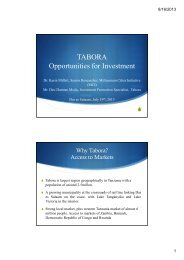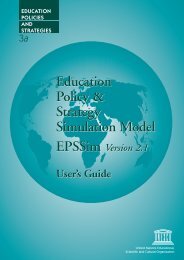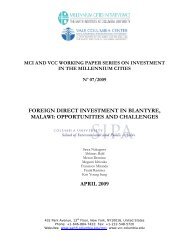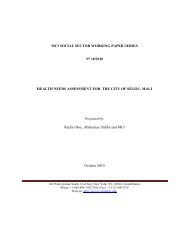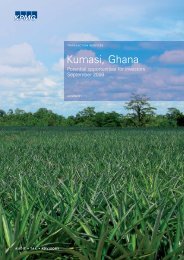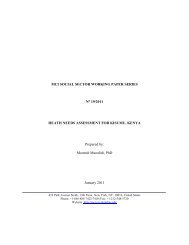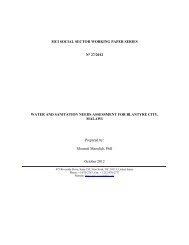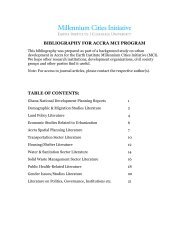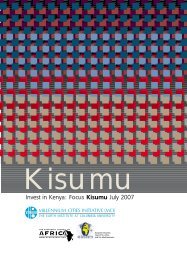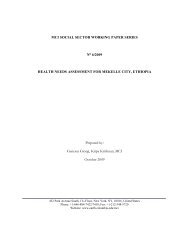Blantyre, Malawi: Potential Opportunities for Investors - Millennium ...
Blantyre, Malawi: Potential Opportunities for Investors - Millennium ...
Blantyre, Malawi: Potential Opportunities for Investors - Millennium ...
Create successful ePaper yourself
Turn your PDF publications into a flip-book with our unique Google optimized e-Paper software.
Meeting the challenges<br />
<strong>Blantyre</strong>, <strong>Malawi</strong>: <strong>Potential</strong> <strong>Opportunities</strong> <strong>for</strong> Investment 14<br />
<strong>Malawi</strong> Growth and Development Strategy (MGDS) is the blueprint <strong>for</strong> the<br />
development of <strong>Malawi</strong>. MGDS is the strategy related to the developmental policies<br />
being pursued by the Government of <strong>Malawi</strong> from 2006–07 to 2010–11.<br />
MGDS<br />
The overarching theme of the<br />
MGDS is poverty alleviation through<br />
sustainable economic and infrastructure<br />
development. Six priority areas (1–<br />
6) have been identified and budgets<br />
have been allocated to each area<br />
<strong>for</strong> implementation over the period<br />
of the plan. These priority areas are<br />
being supported through focus areas<br />
(A–E) that <strong>for</strong>m pillars of the MGDS<br />
implementation. The total budget <strong>for</strong><br />
the MGDS is about US$4.5 billion over<br />
fi ve years.<br />
<strong>Malawi</strong> growth and development strategy<br />
A<br />
B<br />
C<br />
D<br />
E<br />
Sustainable<br />
economic growth<br />
Social protection and<br />
disaster risk management<br />
Social development<br />
Infrastructure development<br />
Improving governance<br />
1<br />
Agriculture and<br />
food security<br />
Source:<br />
MGDS Whitepaper, IMF Country Report No. 07/55, February 2007<br />
The MGDS attempts to replicate the<br />
five years planning process practiced<br />
regularly in USSR and adopted by<br />
developing countries such as India.<br />
The success of this model hinges<br />
on the timely execution of individual<br />
initiatives identified in the five year plan.<br />
2 3 4 5 6<br />
Agriculture and Integrated Nutrition and<br />
food security rural development prevention of HIV<br />
Irrigation<br />
and water<br />
development<br />
Transport<br />
generation<br />
and supply<br />
Move from a consumption economy to a production economy<br />
Attract domestic and <strong>for</strong>eign private investment in production based sectors<br />
Social security to the economically vulnerable population (children, aged citizens etc)<br />
Preventing and mitigating the negative impact of disasters<br />
Development of human capital with respect to health, HIV and AIDS, nutrition, education and gender<br />
HIV and AIDS prevention programs will be central to this focus area<br />
Five main areas of infrastructure: transport and energy, water and sanitation, in<strong>for</strong>mation<br />
and communication technologies, science and technology<br />
Improving governance through economic development, prudent policy <strong>for</strong>mulation, decentralization,<br />
a strong judicial systems, providing social and personal security, corporate governance and human rights<br />
© 2009 KPMG International. KPMG International is a Swiss cooperative. Member fi rms of the KPMG network of<br />
independent fi rms are affi liated with KPMG International. KPMG International provides no client services. No member fi rm<br />
has any authority to obligate or bind KPMG International or any other member fi rm vis-à-vis third parties, nor does KPMG<br />
International have any such authority to obligate or bind any member fi rm. All rights reserved



